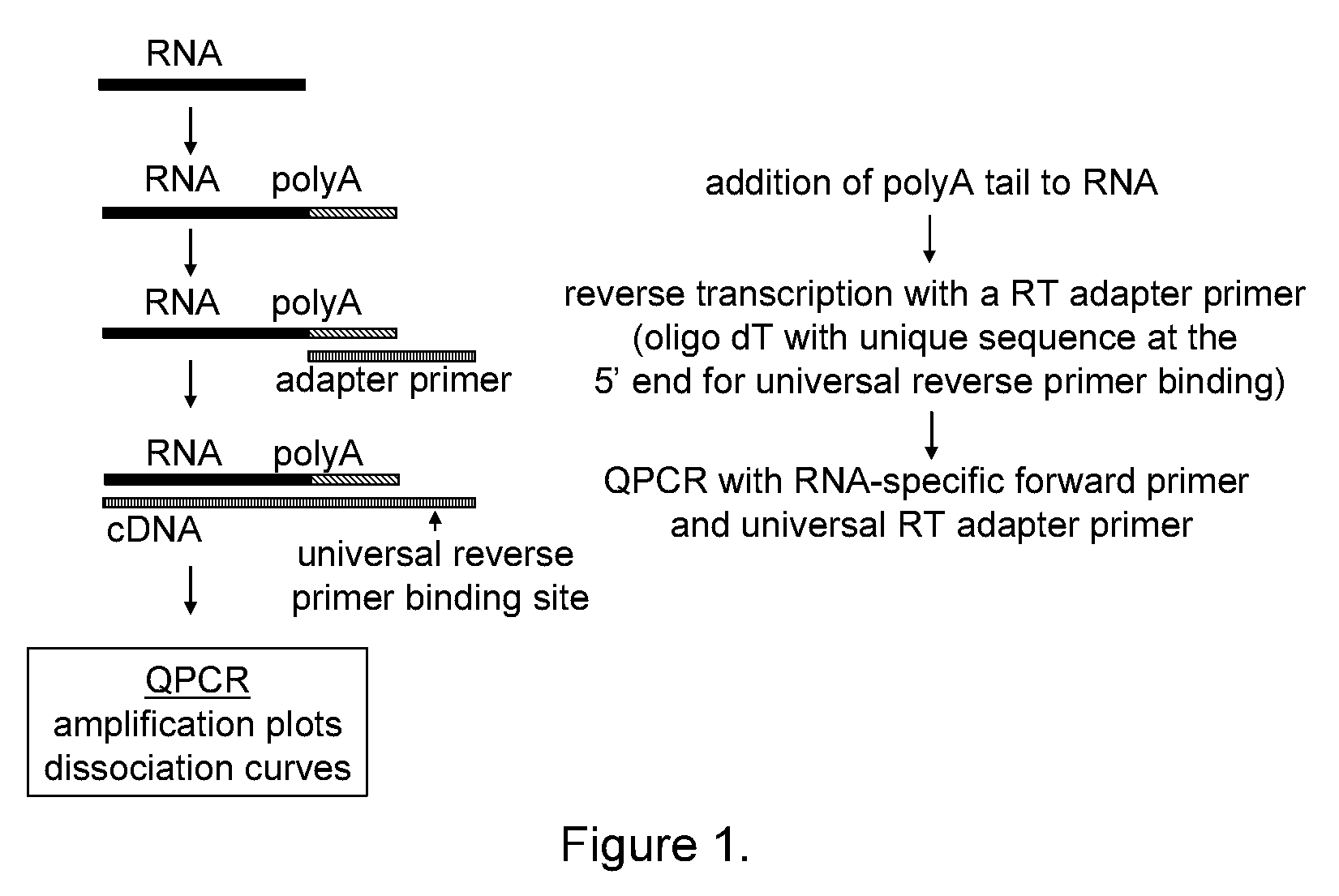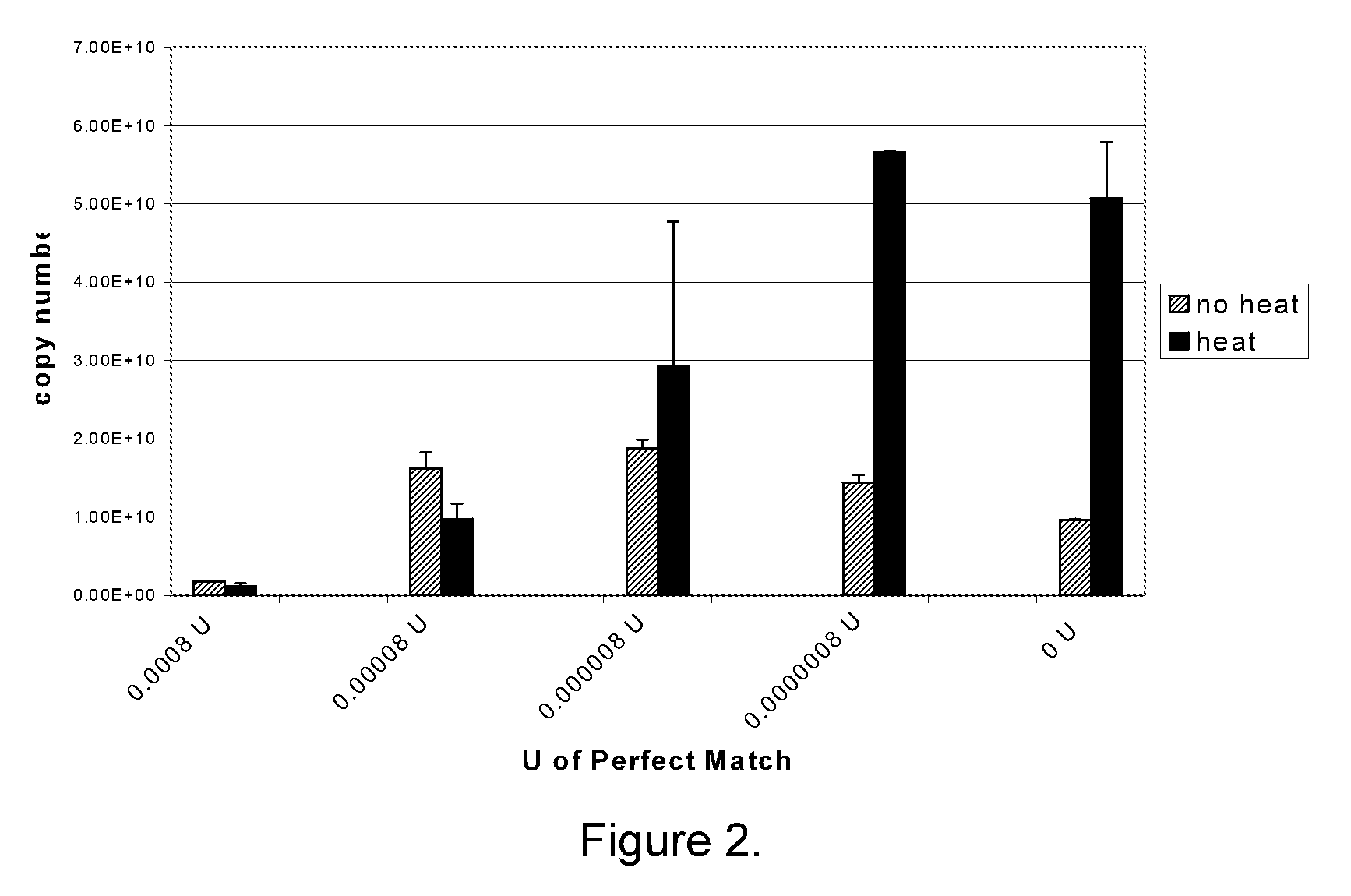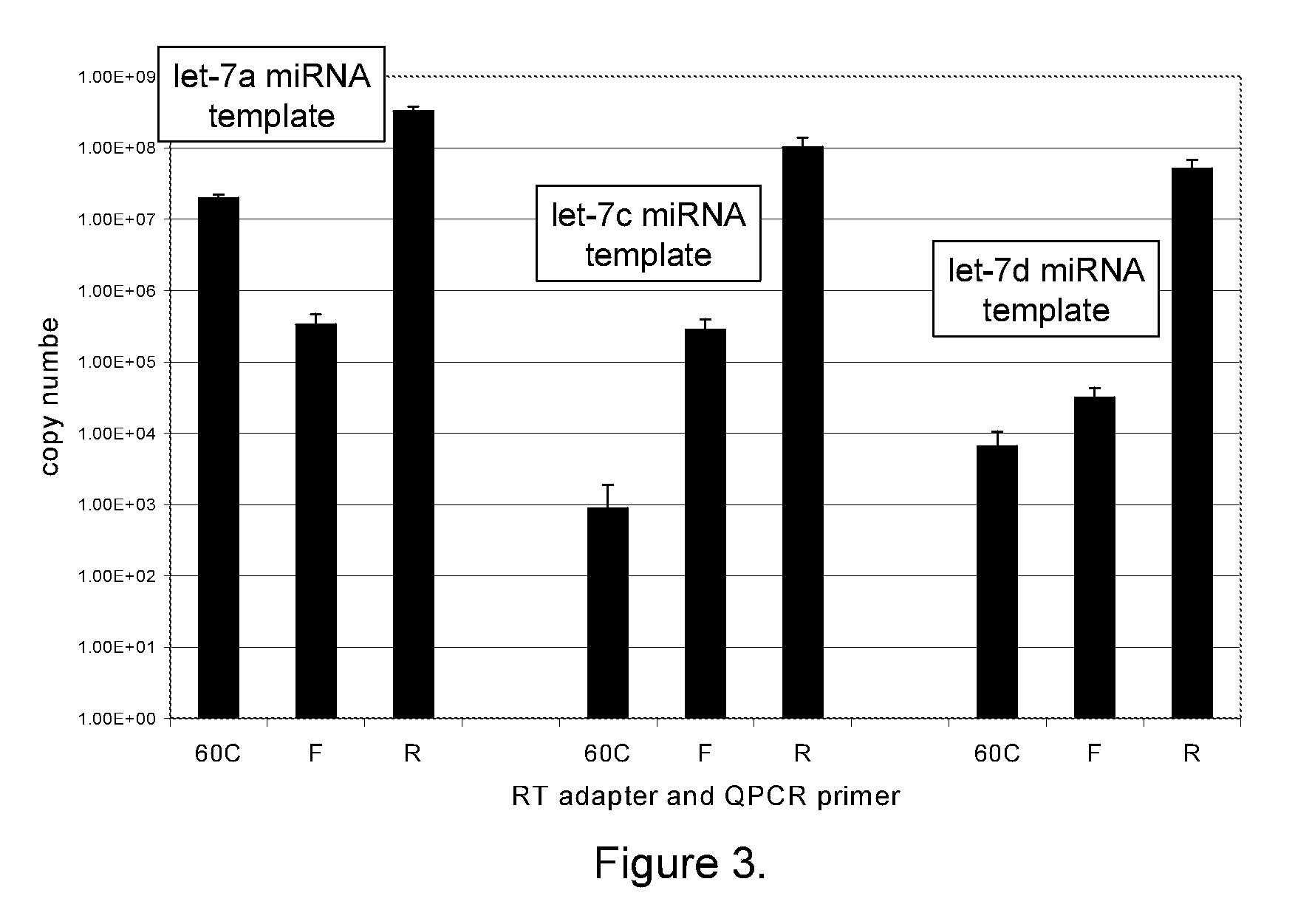Methods, compositions, and kits for detection of microRNA
a technology of microrna and detection kits, applied in the field of molecular biology, can solve the problems of difficult discrimination, not improving the efficiency or specificity of priming in the mirna region,
- Summary
- Abstract
- Description
- Claims
- Application Information
AI Technical Summary
Benefits of technology
Problems solved by technology
Method used
Image
Examples
example 1
Details of a 3-Step Assay According to an Embodiment
[0169]The 3-step assay described herein consists of three different enzymatic steps, which are generally depicted in FIG. 1. In the first step, the RNA molecule is polyadenylated to add a universal sequence that can be used to direct priming in the next step. In the second step, the polyadenylated RNA molecule is annealed to an adapter primer and the RNA molecule is reverse transcribed to generate complementary DNA (cDNA). The adapter primer comprises a homopolymeric region consisting of dT and a unique sequence at the 5′ end that serves as a universal reverse primer binding site in the next step. In the third step, the cDNA is detected with a miRNA-specific QPCR primer and a universal primer.
example 2
PAP Reactions Using Synthetic RNA Templates to Generate Polyadenylated RNA
[0170]For miRNA analysis, polyadenylation (PAP) reactions were performed in 1× E-PAP buffer (Ambion), 0-1 millimolar (mM) adenosine triphosphate (ATP), 0-2.5 mM manganese chloride (MnCl2), 0 to 1014 copies of a synthetic RNA, 0-20 units (U) RNase Block Ribonuclease Inhibitor (optional; Stratagene), and 0-2 U Escherichia coli polyA polymerase (E-PAP; Ambion or Stratagene). PAP reaction components were combined and incubated at 37° C. for 15-60 min. After the incubation period, the PAP reactions were terminated by heating at 95° C. for 5 minutes and stored at 6° C. or −20° C. until further analysis.
[0171]Buffer components were varied in different reactions, including positive and negative control reactions. In positive control reactions, all reaction components, including a miRNA template, were included in the reaction. In these reactions, a signal in QPCR was the expected result. In negative control reactions, ...
example 3
Gel Analysis of Polyadenylated RNA
[0174]For PAP reaction optimization experiments, PAP reaction products were analyzed by gel electrophoresis. A suitable portion of the PAP reaction product was combined with an equal number of a synthetic DNA oligonucleotide comprising a nucleotide sequence that is complementary to the RNA sequence being detected and an equal volume of Novex® TBE Sample Buffer (2×) (Invitrogen). The samples were incubated at 70° C. for 3 min and stored on ice. The samples were loaded into the wells of a 4-20% (w / v) Novex® TBE Gels (Invitrogen) and the nucleic acids separated by electrophoresis at 180V until the bromophenol blue dye front was ⅔ to ¾ the length of the gel. The nucleic acids were then stained with SYBR Gold (Molecular Probes) and visualized with the Eagle Eye® II System (Stratagene) according to the manufacturer's recommended conditions.
PUM
| Property | Measurement | Unit |
|---|---|---|
| Tm | aaaaa | aaaaa |
| Tm | aaaaa | aaaaa |
| Tm | aaaaa | aaaaa |
Abstract
Description
Claims
Application Information
 Login to View More
Login to View More - R&D
- Intellectual Property
- Life Sciences
- Materials
- Tech Scout
- Unparalleled Data Quality
- Higher Quality Content
- 60% Fewer Hallucinations
Browse by: Latest US Patents, China's latest patents, Technical Efficacy Thesaurus, Application Domain, Technology Topic, Popular Technical Reports.
© 2025 PatSnap. All rights reserved.Legal|Privacy policy|Modern Slavery Act Transparency Statement|Sitemap|About US| Contact US: help@patsnap.com



